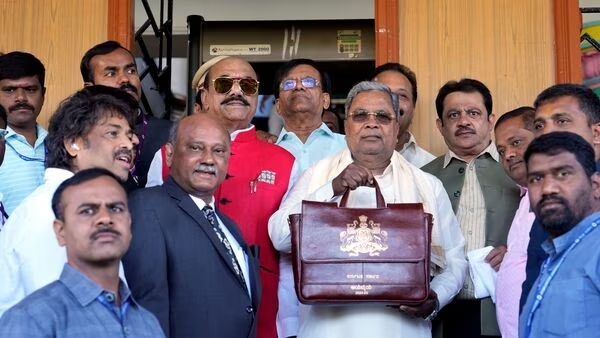Even though the state is financially sound, as the chief minister himself notes, he has projected a revenue deficit of Rs 27,354 crore for the upcoming fiscal year as opposed to Rs 13,951 crore for the previous one.
On the other hand, in his interim budget from February 2023, his predecessor, Basavaraj Bommai, had declared a revenue surplus of Rs 400 crore. The five election pledges or guarantees that Siddaramaiah’s government has carried out, which are believed to have cost Rs 52,000 crore, are what are pulling him down.
It is worth noting that he was the one who delivered the state’s first revenue-surplus budget many years ago. There isn’t much space for manoeuvring now. But Siddaramaiah has been able to maintain the fiscal deficit below the 3 percent ceiling set by the Karnataka Fiscal Responsibility Act, 2002, at 2.95 percent of the GSDP.

Source: Mint
A concrete action plan or indication of a pathway to achieve the same is absent, despite the Chief Minister’s assurance that the state will once again have a revenue surplus in the next two years. The only proposal is to increase excise revenue to Rs 38,000 crore by rationalising duty slabs, up from the current collection of approximately Rs 28,000 crore. Rather than focusing on increasing tourism earnings, the government ought to have considered other sources of income.
The Chief Minister has held the Centre accountable for the state’s suffering, claiming that it has been withholding Karnataka’s just portion of tax money. He mentioned that the state has suffered losses of Rs 59,274 crore because of the “unscientific” application of the GST and Rs 62,000 crore because of the reduced devolution of tax revenues to the state.
Source: Mirror Now
Additionally, the Finance Commission recommended special awards of Rs 11,596 crore have not been released by the Center. Siddaramaiah asserted that he has still allocated Rs 1,20,373 crore for welfare initiatives. The fact that the drought-related decline in the agriculture sector’s growth was 1.8% is also concerning, as the largest contributor to the state coffers, the service sector, rose by 8.7%, and the industrial sector, by 7.5%.
The budget could have included some suggestions to increase manufacturing in order to shift excess labour from the agriculture sector to manufacturing while the latter recovers.The ‘Kisan Mall’, the convergence of multiple farmer schemes, the provision of record crop loans to farmers, the allocation of Rs 850 crore for school facilities, and the unwavering pledge to transform Bengaluru into a global city are just a few of the highlights. Siddaramaiah has succeeded in maintaining the five assurances despite the budget’s lack of any noteworthy proposals, disproving the predictions of those who said the government wouldn’t be able to continue these programs for very long.
What do you think about this? Comment below.

